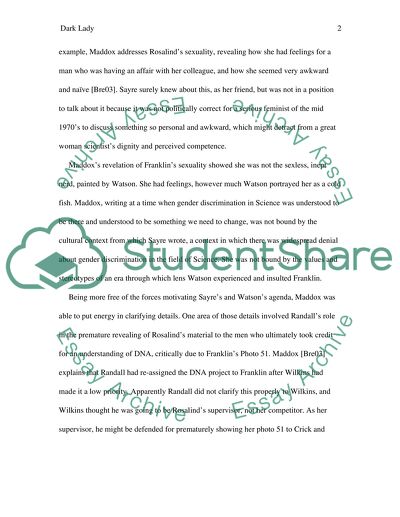Cite this document
(“Dark Lady: An Holistic Perspective Essay Example | Topics and Well Written Essays - 1750 words”, n.d.)
Retrieved from https://studentshare.org/environmental-studies/1417632-rosalind-elsie-franklin-s-part-in-the-discovery-of
Retrieved from https://studentshare.org/environmental-studies/1417632-rosalind-elsie-franklin-s-part-in-the-discovery-of
(Dark Lady: An Holistic Perspective Essay Example | Topics and Well Written Essays - 1750 Words)
https://studentshare.org/environmental-studies/1417632-rosalind-elsie-franklin-s-part-in-the-discovery-of.
https://studentshare.org/environmental-studies/1417632-rosalind-elsie-franklin-s-part-in-the-discovery-of.
“Dark Lady: An Holistic Perspective Essay Example | Topics and Well Written Essays - 1750 Words”, n.d. https://studentshare.org/environmental-studies/1417632-rosalind-elsie-franklin-s-part-in-the-discovery-of.


